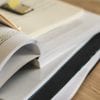Last Updated On: July 1st, 2024
When you are getting ready to take the CBEST Math test, you want to prepare efficiently and well. If you are looking for ways to help you get prepared and feel good about your upcoming CBEST Math exam, here are some obvious and not-so-obvious suggestions to help you consider your test preparation from multiple angles. We’ll look at the test as part of the overall CBEST, at your relationship with the testing in general, and at your relationship with the material specifically.
The CBEST Math as a CBEST section.
One way to help maximize your preparation is to think of the Math subtest as a part of the overall CBEST. Knowing what you need out of the test and how to work with the test in general will help you with your CBEST Math subtest. Here are some things to consider:
- Know when you need to have your scores. Check on your program to make sure that you are on track to receive your Math subtest scores for your program’s due dates. Knowing when your program wants the CBEST scores will help you be prepared by allowing you to select a test date that fits your needs.
- Sign up for a test date. After you know your time, you will continue preparing by actually booking that exam date. There are two location types for testing, so when you are signing up, you’ll pick a location that works for you. You can sign up for an approved testing center or online proctoring. Booking that test date will prepare you for the type of testing experience that you will have, and it will increase your motivation in your topic review, so make the decision and book the date!
- Know what score you need relative to the whole test. To succeed at the CBEST, you will need 123 points overall. However, each section must be scored at least 37 to pass a subtest. Do you need your 41 (the average to pass), or is a 37 fine? Are you going to need your math section to cover for a weaker reading or writing section? Knowing where your strengths are and any previous subtest scores can help you decide what your testing goal will be. It is always a good idea to aim for a slightly higher score than you need. Also, if math is your first test, it is a great plan to try to score higher than 41, which can give you some wiggle room on your other sections
- Know the format. The CBEST exam is given at approved testing centers or through remote proctoring, but it is always given in a computer based format. Practice using the OnScreen Tutorial for format practice so that you will be more confident with the controls on the day of your test. This will allow you to focus on the math questions and not the navigation during your exam. You will have enough on your mind on test day; learning the controls in advance will relieve some of the test-day pressure.
CBEST Math testing and You
The CBEST Math subtest is a standardized math test, and there are a variety of strategies that you can use to prepare for the “test” aspect of the exam. There are strategies that you can use for tests generally, for multiple choice tests, and for multiple choice math tests specifically.
- Be familiar with the style of the test questions. To see the style and level of the math questions, you can start with the Official Math Practice Test. Knowing the types of questions that you will see can help you prepare for them. The Math section of the CBEST has 50 questions, all multiple choice, to be answered in 2 hours. (That breaks down to 2.4 minutes per question). The questions are mostly word problems, so that time will be spent reading, breaking down, and solving each question.
- Know how to do multiple choice questions using standardized test strategies. Some useful strategies that apply to standardized tests or standardized math tests generally can help you on the CBEST Math. For example, identifying when you can use answer choices to focus your approach or skip the math entirely can make questions much easier. Knowing to only pick “the closest one” if you did rounding in your math will help you recheck your calculations and fix mistakes that could lead to a wrong answer. Forcing yourself to only change your answer if you have a definite reason to change it, like remembering a process or noticing new information, will reduce the experience of changing an answer from the right one to the wrong one; if you are picking an answer because you think it is the right one, your first thinking is almost always better.
- Deal with test stress. Tests can be nerve wracking! If test pressure affects you, it can make the exam process more difficult. Identify what level of test stress you have, if any. Do you work yourself up while you are supposed to be studying, or do nerves hit you when you get to the location? Do you freeze during an exam or get small bits of nervousness? Practice relevant stress reduction strategies. Some to use are here: before your test day, on test day, and during your test. Knowing how to deal with your personal test nerves can prepare you for studying and for the exam ahead of you.
- Be realistic for what you can do alone, and ask for help to be more efficient. As educators we tend to be independent and occasionally over-optimistic with what we can accomplish. Consider the things that are competing for your time as you are studying for the CBEST. Getting help from trusted friends, math tutor, or mentors can help you be successful on the CBEST Math subtest more easily. Friends can keep you responsible and accountable if you need to check in with them, or you can set up work dates with them. Tutors and mentors can streamline topics and focus your study to make time more effective, so you need less of it. They can also show extra hints that you might not find on your own or that might take a long time to find independently.
- Remember timing. The CBEST Math is a timed exam, so you will have to consider timing. When you are practicing, make sure at least some of your practice materials include a timed aspect. It is easy to practice questions without timing, to take the pressure off, but then forget that those questions will be timed, which is a different experience. You want to allow yourself experience practicing with timing. Remind yourself that you could, of course, do much better with unlimited time, but you are practicing to do your best with the restrictions you will have on the exam. A great score on a practice test will not pass your CBEST Math, so be strict and understanding with yourself, just like you would be with your students!
CBEST Math material and You
Technically, the CBEST Math section will test estimation, measurement, and statistical principles (30% of the subtest), computation and problem-solving (35% of the subtest), and numerical and graphic relationships (35% of the subtest). This information by itself is likely not too useful. So do some research into your math challenges.
- Know your weak areas. To prepare most effectively, you will want to know your weakest areas. It is easier to raise your CBEST Math subtest score by improving your weaker topics than it is by improving your stronger topics. Therefore you will want to find your weak areas by taking a practice test, thinking about what areas are less comfortable for you, and looking through the published test topics. The Official Math Practice Test is a great place to start as it is published by the same people who put out the CBEST, so you will definitely see relevant topics there. The more practice materials your review, the more you will see trends in concepts that you can review. Preparation is most effective by trying to find as many weak areas as you can before the test so that you can work on them (as opposed to finding them during the test, which is just frustrating).
- Strengthen your weak areas. Once you have found your weaker areas, you will want to strengthen them. Use materials that make sense for you. Videos, textbooks, worksheets, activities, flashcards, practice tests, and math packets are some formats that may be useful in your preparation. Work with a tutor or mentor to strengthen challenging concepts that are rough for you to speed up your learning and deepen your understanding. Be consistent with your study: practice over a period of time if you can and review materials so that you don’t re-forget them. Focus on applications that are similar to the format you will see by working with resources that are meant specifically for the CBEST. You will likely use additional materials that are not CBEST focused, but remembering to review your CBEST-specific materials will keep you thinking about the reason you are learning the material and the format you will be using.
- Practice basic calculations because you won’t have a calculator. We use calculators for most calculations in our life, but you will not be using one on the CBEST math. Make sure that you have reviewed basic calculations that you may have gotten unused to since you initially learned them. You will need to be able to do operations accurately and reasonably quickly. If you have gotten rusty on any of your standard calculations, practicing them until they are smooth will help your timing and confidence in the test.
Awareness and practice are key to successful preparation for the CBEST Math. Following these tips will allow you to view the exam as a part of the CBEST, as a standardized math test, and as a test of math topics. With these considerations, you will be well on your way to accomplishing a successful CBEST Math subtest preparation!




















